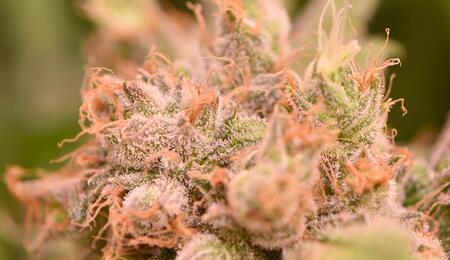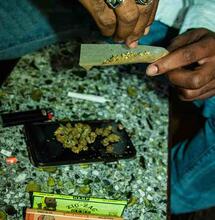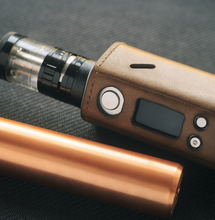What is better: wet or dry trimming?

There is presumably no right answer to this question. Everybody must decide for themselves whether to remove the leaves from cannabis plants immediately after harvest or to let them dry first. What I can do is to lay down before you all the essential information about the advantages and disadvantages of both methods so that you can choose whichever technique suits you better.
A little bit of plant anatomy
As readers of Soft Secrets magazine, I do not doubt that you are interested in female cannabis flowers. Or more precisely – you are interested in the resin produced by glandular trichomes. The most glandular trichomes can be found on female flowers’ calyxes. And from the flowers, there are also two types of leaves protruding. One large, characterized by a thicker and longer petiole, a large leaf area and a relatively small number of glandular trichomes, which are concentrated at the base of the blades. These leaves usually consist of five to seven small leaves and are a characteristic sign of cannabis. They grow from stems and branches at all levels of the plant and play an essential role in the assimilation of light energy. Also, they are of great importance in the process called transpiration, as they have closable vents that determine how quickly and how much water evaporates from the plant. The second type of leaves has the same functions but is smaller and its weak petioles do not protrude from the flower. These leaves often have a smaller number of tiny leaves, but they are covered in glandular trichomes. In English, the term fan leaves is used for larger leaves and sugar leaves for smaller one. Smaller leaves have earned being named after sugar thanks to a high density of glandular trichomes, which make them look sugary. These two types of leaves play a crucial role in trimming the harvest.
Durban Poison before and after removing large leaves.
Why and how to (not) cut the leaves
Whether you remove the leaves immediately after harvest or later when the plants are dry, you do so for two reasons. The large leaves are practically absent of trichomes; thus they contain very low amounts of cannabinoids and terpenes. When smoking or vaporizing, large leaves significantly worsen the taste, due to the high content of chlorophyll and negligible presence of resin with terpenes. Although small leaves are significantly more potent, they also have a negative effect on the taste of flowers. In short, you can expect the finest taste and aroma from flowers without leaves. There is a general agreement about removing large leaves – be it fresh or dry – as they are of no use for most growers. The situation is different in case of smaller leaves. These can serve as protection of flowers against mechanical damage and rapid drying. If you decide to leave small leaves on your buds, you can remove them just before smoking. Of course, they can also be consumed along with the bud at the cost of a slight deterioration in taste. Trimmed leaves always come in handy. While large leaves are best suited for making creams and ointments, small leaves have much broader potential. They can be used for various types of extractions, soaked in spirits, added in food and for above mentioned ointments and similar preparations applied to the skin. In case of emergency, they can of course be smoked, too. To remove the leaves, it is advisable to use pointed scissors in order to precisely remove the leaves even with the petiole. I personally remove large leaves by hand. It is faster and with a little exercise the petiole breaks right at the stem. Nonetheless I still have scissors on hand in case some leaves cannot be removed well or when they are torn along with the stem and remove also flowers below. It is not always necessary to remove small leaves as a whole – it depends on their size. The smallest ones can be left in buds, medium-sized ones can be cut in place where they protrude from the flower. Small leaves richly covered with resin, whose petiole already begins to protrude from the flower, should be removed completely, even with the petiole, because neither taste nor aroma is improved with it. This procedure leads to seemingly attractive buds with maximum emphasis on great taste. It should be noted that by leaving small petioles and medium-sized sugar leaves on your buds, the harvest weights more. In larger volumes, this can make a difference equal to a decent extra profit, which benefits many black market dealers.
Wet trim
Most grower removes large and small leaves immediately after harvest. This method carries several advantages. Fresh plants are flexible, being easier to handle when trimming. You can easily open the buds and remove all the unwanted leaves without damaging the flowers. Another important advantage is a lower risk of resin falling off. Fresh trichomes remain flexible and firmly attached to the calyxes and leaves. Also the resin separates less than when handling dry material. This is especially important for machine trimming. If you are struggling with a lack of space for drying flowers, trimming wet plants is again a better solution for you. Usually, fresh buds are removed directly from large branches and can then be spread on various drying sieves. In addition, they can be placed on top of each other, so you do not really need that much space compared to drying whole plants. Drying this way takes less time and can take from four to ten days, depending on the climatic conditions on site. However some growers prefer to trim only the leaves and leave the flowers on the branches. This slows down the drying time, which can have a positive effect on the quality of flowers, especially if the plants are drying in a warmer and drier climate. In this case, another advantage is that buds preserve their natural shape. When drying on a sieve, larger sticks may flatten on the side on which they lie. Drying whole plants after trimming large and small leaves is de facto method combining wet and dry trimming. Wet trim has some disadvantages, too. Scissors, hands, and other tools are very sticky because of the resin, which is pretty hard to remove. Of course, this can be solved by using latex gloves and frequent cleaning of the tools with alcohol. But, obviously, do not throw away the resin, it has a high concentration of cannabinoids as well as terpenes.
Small leaves called sugar leaves are soaking in resin.
Dry trim
I practiced dry trimming for quite a long time. It is more laborious, yet it allows you to control fully the appearance of the final product. When trimming fresh buds, you one cannot tell how much the major parts would dry out and how much the remaining leaves would protrude. With dry buds, you can tell exactly which leaves need to be removed from the flowers and which can stay. Whole plants dry longer, but this can have a positive effect on the taste and smell of the final product. The drying time usually ranges from seven to fourteen days. When trimming dry plants, your tools and hands will not get so sticky. In addition, if you place a sieve suitable for resin collection under the trimmed buds, you will end up with a decent portion of high-quality hashish ready for use. Even dry trimming has certain disadvantages. The first has to do with the process of drying – when buds are covered by leaves, the risk of mold increases. Whole plants should be dried in well-ventilated areas at a temperature of around 18 °C. Glandular trichomes do not hold as well on dry parts of plants as on fresh ones, and they break and fall off easily. Even the resin balls can fall off very easily and quickly from dry trichomes. When trimming dry plants, it is therefore necessary to work efficiently and with sensitivity and to try damage the plants as little as possible.
Manual work and machines
Trimming buds is a tedious and rather boring job. Still, most home growers manage to handle the process simply with their own hands and scissors. When it comes to commercial growers, many still prefer manual work, too. We can say that manual trimming is more precise and helps achieve the highest quality, provided the fact it is done correctly. In countries where cannabis cultivation is legal, there are groups of professional trimmers who work according to the harvest schedule of their customers – official growers. They come, trim, get paid and move onto the next stage. Nevertheless, there are machines for everything nowadays, and trimming makes no exception. While a few years ago the machines were only good for trimming fresh buds, today you can easily buy a machine that can handle even dry flowers. It makes post-harvest works significantly faster, especially if you harvest tens, hundreds, or thousands of pounds. The trimming quality is pretty high, but my personal opinion is that with manual trimming, the buds are less damaged, the results look better and there is less waste. Of course, this does not mean that I disapprove the cutting machines. On the contrary, I use them myself. The last issue that needs to be solved regarding the machines is to make their cleaning easier. And what is your preferred method of trimming plants?
Glandular trichomes cover the entire area of the calyxes.
More articles on Sweet Seeds to be found in Soft Secrets S.A.D. (Sweet Afghani Delicious) – The big dwarf Crystal Candy® and Blow Mind Auto® The Queen of the Garden: Sweet Zkittlez® by Sweet Seeds®



